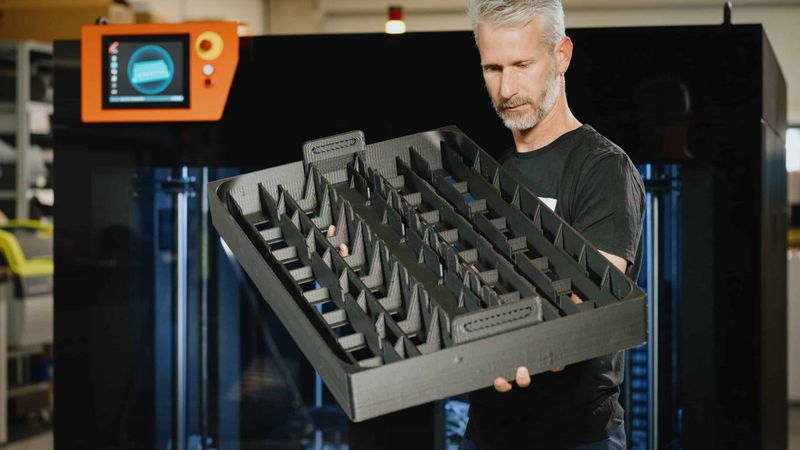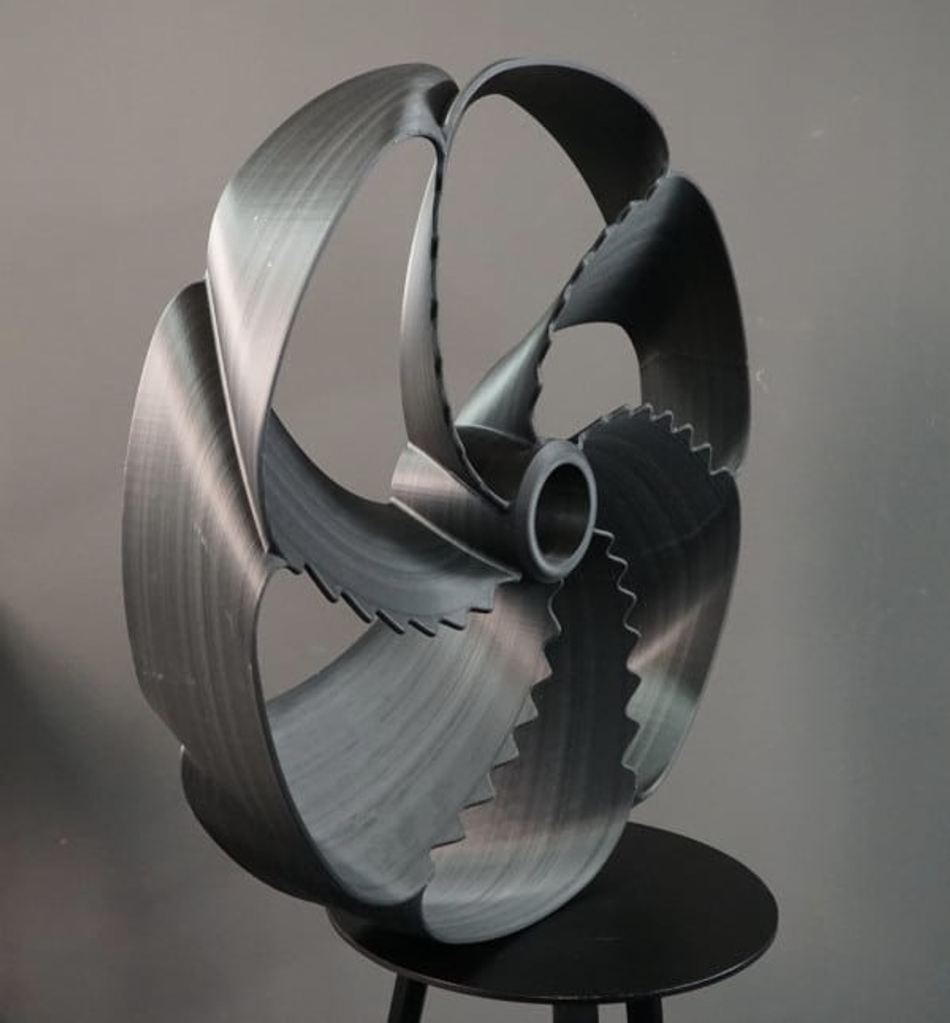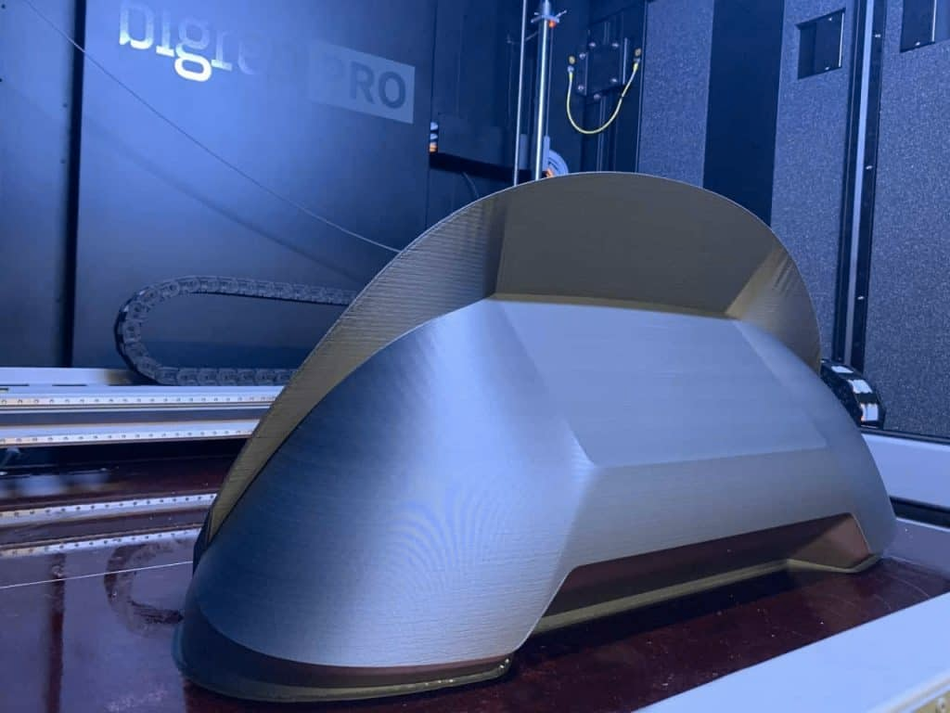How do you choose the perfect 3D printing filament - A comprehensive overview of large scale printing materials
When it comes to FFF (Fused Filament Fabrication) 3D printing, selecting the appropriate printing material is crucial and should never be underestimated.
Introduction
The choice of material not only influences the mechanical strength of your printed part, but also its functional characteristics, durability, production time, and final aesthetics.
With an expanding array of options available, from popular choices like ABS to bio-derived polymers and advanced filaments incorporating carbon fiber, the range of materials to consider continues to grow. So, how do you navigate and choose the ideal material for your specific application? In this article, we will explore BigRep's material portfolio to guide you in making an informed decision.
BigRep’s material portfolio
In addition to their line of large-format 3D printers, BigRep provides an extensive selection of printing materials. While BigRep 3D printers are open, meaning they are compatible with any third-party filament, BigRep offers its own range of materials specifically designed for optimal results in large-format printing.
BigRep filaments are conveniently available in spools ranging from 2.5 kg to 8 kg, enabling uninterrupted printing for large-scale projects. Every filament ensures a uniform composition and diameter for consistent printing quality. Each material undergoes thorough testing to ensure compatibility with BigRep printers and meet their specific requirements.
Choosing the right 3D printing material
- Mechanical resistance, stiffness and flexibility
When it comes to 3D printing materials, mechanical resistance plays a crucial role in determining the suitability of a material for various applications that involve physical stress. Different materials can offer specific mechanical properties tailored to meet your specific needs. In BigRep's material portfolio, two highly resistant options are ASA (acrylonitrile styrene acetate) and TPU (thermoplastic polyurethane), both known for their excellent impact strength. If stiffness is a priority, consider using filaments reinforced with carbon fiber, such as HI-TEMP CF and PA12 CF, which offer exceptional mechanical properties and durability.
For applications requiring flexibility, TPU is the ideal choice for flexible 3D printing. BigRep's TPU filament has a Shore hardness value of 98A, striking the perfect balance between flexibility and strength. Sustainability is another important aspect to consider, as many 3D printing filaments are derived from petrochemicals. However, in BigRep's material portfolio, you can find a range of bio-derived polymers that offer competitive mechanical properties, from the affordable PLA to PETG, a sustainable alternative to ABS.
- UV, temperature and chemical resistance
The resistance of materials to environmental degradation is a crucial consideration depending on the intended application of your 3D printed part. Factors such as UV exposure, high temperatures, and chemical corrosion can significantly impact the structural integrity and longevity of the printed object. This is particularly important for outdoor applications or challenging environments like automotive or sporting equipment.
Both ASA and TPU excel in terms of UV resistance, making them ideal choices for applications exposed to sunlight. They offer reliable protection against UV radiation, ensuring prolonged structural integrity. Additionally, TPU exhibits excellent chemical resistance and can withstand a wide range of chemicals, along with temperatures up to 100 °C. PA12 CF, polyamide is reinforced with carbon fiber, also offers resistance to various chemicals, including bases, oils, alcohols, and salts.
In the realm of bio-derived materials, if you require a high-temperature resistant alternative to PLA, consider PRO HT, HI-TEMP, and HI-TEMP CF. These materials possess high heat deflection temperatures, allowing them to withstand temperatures up to 115 °C without distortion. Moreover, HI-TEMP CF possesses low moisture absorption properties, making it particularly suitable for humid environments.
- Printing speed and easy post-processing
Achieving the right balance between extrusion speed and part quality is a significant challenge in additive manufacturing.[1] Print speed, typically measured in mm/s, can vary from 40 mm/s to 150 mm/s in most FFF 3D printers. However, different materials react differently to high speeds, with some being more prone to warping and defects than others. For example, increased print speed in some materials can impact the adhesion between printed layers.[2]
PLA is well-known as one of the best materials for high-speed printing. In BigRep’s portfolio, PETG and PLX also provide excellent printing speed. In particular, PLX can be printed up to 80% faster than a standard PLA material, with consistent quality results.
Production speed of a 3D printed part isn’t limited to extrusion speed, but should also take post-processing time into account. This includes sanding, polishing, and coating. Thanks to its excellent surface quality, PA12 CF doesn’t require any additional post-processing and can be used immediately after printing. Another time-consuming post-processing step is the removal of support structures needed for printing complex parts. BVOH (butenediol vinyl alcohol copolymer) is a water-soluble polymer ideal for printing support structures that can be easily and rapidly dissolved in water.
- Ease of use
If you’re looking for user-friendly materials that simplify the printing process, BigRep’s portfolio provides several solutions. PRO-HT offers a user-friendly and straightforward printing process ensuring easy removal of breakaway supports, with minimal residue on the adjacent print surface.
PLX exhibits versatility, with the option to fine-tune printer settings for either high-speed printing or smooth surface finishes. With PLX, you can consistently achieve high-quality results, making it a dependable material for large-format printing.
PLA can be printed at low to moderate temperatures, between 190 °C and 240 °C. This allows for successful prints without the need for a special cooling system. Compared to other polymers used in 3D printing, PLA demonstrates minimal warping, making it an excellent choice for hassle-free printing.
Finally, BigRep’s PETG offers an odorless extrusion process and readily achieves a smooth flow within a temperature range of 190 °C to 240 °C. PETG exhibits minimal shrinkage and warping, ensuring reliable and consistent prints.
- Surface quality
The surface finish of 3D printed parts is, of course, a significant feature for aesthetic applications. The part’s final appearance - be it glossy or a matte - depends on the material you are printing with. However, surface quality also affects other significant properties of the printed object, even in the case of functional components where aesthetic appeal isn’t a concern. For example, grip and paint adhesion are significantly affected by the surface texture of your printed parts.
BigRep’s HI-TEMP bio-derived filament provides an matte finish. PLX and PETG, on the other hand, are suitable for smooth surface finishes. If you’re looking to combine the mechanical strength and thermal resistance of carbon fiber reinforced materials with an optimal surface quality, you could consider opting for HI-TEMP CF or PA12 CF.
- Sustainability
If low environmental impact is your concern, you should consider using bio-derived polymers as your printing material. PLA, HI-TEMP and PRO-HT are all entirely bio-derived. Both HI-TEMP and PRO-HT are fully bio-degradable under the appropriate conditions and are CO2 neutral, making them much more sustainable alternatives to thermoplastics derived from petrochemicals like ABS. Finally, BVOH, a water-soluble polymer used for support structures in complex prints, is also environmentally friendly and non-toxic. Because it fully dissolves in water, its use reduces plastic waste resulting from the printing process.
Use cases and applications
Depending on the balance of processing speed, resistance, durability and physical properties, different filaments are suitable for specific applications, from prototyping to end-use parts.
For rapid prototyping, pricing and lead time are crucial factors in the choice of the right printing material. By reducing cost and increasing speed, more iterations can be achieved, allowing you to quickly optimize your designs. In BigRep’s portfolio, PLA and PLX are both materials with fast printing speeds suitable for prototyping. Easy printing and support removal makes PRO-HT ideal in low-volume additive manufacturing for both prototypes and end-use applications.
Applications of 3D printed components can range from industrial tooling, molds and patterns, to end-use parts. For industrial tooling, high strength, rigidity and durability are key requirements, making ABS and carbon fiber-reinforced materials, such as PA12 CF, a suitable choice. For thermoforming processes such as molds and patterns, high temperature resistance and dimensional stability are crucial. With its high deflection temperature and optimal durability, HI-TEMP CF is ideal for this kind of applications.
Finally, ASA is optimal for end-use applications that require weather and UV resistance, from sporting goods to the automotive industry. Both PRO-HT and HI-TEMP provide great durability and temperature resistance as well, and are food-safe according to both FDA and EU directives. With its matte surface finish, HI-TEMP is also suitable for household appliances and electrical casings.
References
[1] BigRep. 3D Print Speed in Fused Filament Fabrication (FFF). BigRep [Internet]. 2022 Dec 6. Available from: https://bigrep.com/posts/3d-print-speed-fff/
[2] Benedict O’Neill. 3D print speed: What it is and why it matters. Wevolver [Internet]. 2022 Jul 25. Available from: https://www.wevolver.com/article/3d-print-speed-what-it-is-and-why-it-matters



